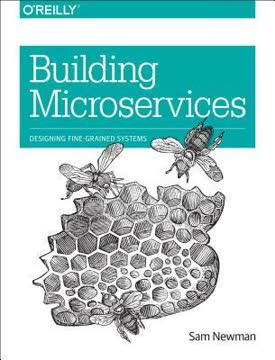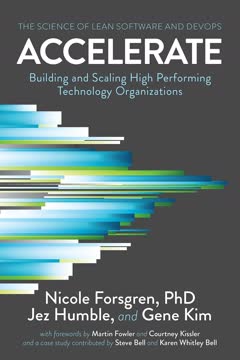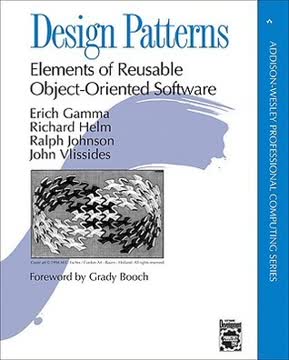Key Takeaways
1. Software architecture is the foundation for system quality and success
Architecture is the carrier of the earliest, and hence most-fundamental, hardest-to-change design decisions.
Defining architecture. Software architecture refers to the high-level structures of a software system, the discipline of creating such structures, and the documentation of these structures. It encompasses the set of significant decisions about the organization of a software system, including:
- Selection of structural elements and their interfaces
- Behavior as specified in collaborations among those elements
- Composition of these elements into larger subsystems
- Architectural style that guides this organization
Importance of architecture. A well-designed architecture is crucial for:
- Meeting quality attribute requirements (performance, security, modifiability, etc.)
- Reasoning about and managing change as the system evolves
- Enabling communication among stakeholders
- Providing a basis for reuse and product line development
- Allowing for cost and schedule estimation
2. Quality attributes drive architectural decisions and tradeoffs
A system's ability to meet its desired (or required) quality attributes is substantially determined by its architecture.
Key quality attributes. The most important quality attributes that architects must consider include:
- Performance
- Scalability
- Availability
- Security
- Modifiability
- Testability
- Usability
Architectural tactics. Architects employ specific tactics to achieve desired quality attributes. For example:
- Performance: Manage resources, control resource demand
- Availability: Detect faults, recover from faults, prevent faults
- Security: Resist attacks, detect attacks, react to attacks
- Modifiability: Localize changes, prevent ripple effects
Tradeoffs. Achieving one quality attribute often impacts others. Architects must carefully balance tradeoffs, such as:
- Performance vs. modifiability
- Security vs. usability
- Availability vs. cost
3. Modifiability and testability are critical for long-term system health
About 80 percent of a typical software system's total cost occurs after initial deployment.
Designing for change. Modifiability tactics help manage the cost and complexity of future changes:
- Encapsulation and information hiding
- Use of interfaces and intermediaries
- Separation of concerns
- Deferring binding time of design decisions
Testability considerations. Testable architectures reduce the cost and improve the effectiveness of testing:
- Provide mechanisms to control and observe system state
- Design for test automation
- Isolate dependencies for unit testing
- Support integration and system-level testing
Balancing act. Architects must balance immediate functionality needs with long-term maintainability:
- Invest in modifiability and testability upfront
- Use patterns and tactics that support future changes
- Document design decisions and rationale for future teams
4. Performance and scalability require careful architectural planning
Performance is often linked to scalability—that is, increasing your system's capacity for work, while still performing well.
Performance tactics. Key strategies for achieving good performance include:
- Resource management: Scheduling, concurrency, caching
- Resource demand control: Reducing computational overhead, managing sampling rates
- Efficient algorithms and data structures
Scalability approaches. Architects must plan for growth in system usage:
- Horizontal scaling (adding more instances)
- Vertical scaling (increasing resource capacity)
- Load balancing and distribution
- Caching and content delivery networks (CDNs)
Measurement and tuning. Continuous performance monitoring and optimization are crucial:
- Establish performance benchmarks and SLAs
- Use profiling and monitoring tools
- Identify and address bottlenecks
- Consider tradeoffs with other quality attributes (e.g., security, modifiability)
5. Security and safety must be designed into the architecture from the start
Security is a measure of the system's ability to protect data and information from unauthorized access while still providing access to people and systems that are authorized.
Security tactics. Key strategies for building secure systems:
- Authenticate and authorize users
- Encrypt sensitive data
- Implement secure communication protocols
- Detect and respond to attacks
- Isolate and compartmentalize system components
Safety considerations. For systems where failure can lead to harm:
- Conduct thorough hazard analysis
- Implement fault detection and recovery mechanisms
- Design for graceful degradation
- Use redundancy and diversity in critical components
- Validate and verify safety-critical functions
Holistic approach. Security and safety require consideration at all levels:
- Architecture and design
- Implementation and coding practices
- Operational procedures and monitoring
- Regular audits and penetration testing
6. Cloud and distributed computing introduce new architectural challenges
Distributed system is one in which the failure of a computer you didn't even know existed can render your own computer unusable.
Cloud architecture patterns. Leverage cloud-native patterns for scalability and resilience:
- Microservices architecture
- Containerization and orchestration (e.g., Kubernetes)
- Serverless computing
- Event-driven architectures
Distributed systems challenges. Address key issues in distributed environments:
- Consistency and eventual consistency
- Partition tolerance
- Latency and network failures
- Distributed transactions
- Service discovery and load balancing
Cloud-specific considerations. Adapt architectural decisions to cloud environments:
- Multi-tenancy and resource sharing
- Elasticity and auto-scaling
- Data storage and caching strategies
- Cost optimization and resource management
- Compliance and data sovereignty
7. Effective interfaces and documentation are essential for system integration
All elements have interfaces. All elements interact with some actors; otherwise, what is the point of the element's existence?
Interface design principles. Create clear and effective interfaces:
- Follow the principle of least surprise
- Design small, cohesive interfaces
- Use consistent naming conventions
- Provide clear error handling and feedback
Documentation best practices. Ensure comprehensive and useful documentation:
- Document interfaces, components, and their interactions
- Use multiple views (e.g., logical, process, deployment)
- Include rationale for key design decisions
- Keep documentation up-to-date with the system
Integration strategies. Plan for smooth integration of components:
- Use standardized communication protocols
- Implement loose coupling between components
- Design for interoperability and extensibility
- Employ integration testing and continuous integration practices
8. Continuous deployment and DevOps practices shape modern architectures
DevOps is a set of practices intended to reduce the time between committing a change to a system and the change being placed into normal production, while ensuring high quality.
Continuous deployment pipeline. Design architectures that support rapid, frequent releases:
- Automate build, test, and deployment processes
- Implement feature toggles and canary releases
- Use infrastructure-as-code for consistent environments
- Design for monitoring and observability
DevOps considerations. Align architecture with DevOps principles:
- Design for testability and automation
- Support easy rollback and recovery
- Implement logging and monitoring from the start
- Enable easy configuration management
Cultural shift. Recognize the impact on team structure and processes:
- Foster collaboration between development and operations
- Emphasize shared responsibility for system quality
- Encourage experimentation and learning from failures
- Align architecture decisions with business goals and metrics
9. Architecture evaluation and debt management ensure long-term viability
Architecture evaluation as a risk reduction activity.
Evaluation methods. Regularly assess architectural decisions:
- Architecture Tradeoff Analysis Method (ATAM)
- Cost Benefit Analysis Method (CBAM)
- Active reviews for intermediate designs
- Scenario-based evaluation techniques
Technical debt management. Address architectural shortcomings proactively:
- Identify and track sources of technical debt
- Prioritize debt repayment based on business impact
- Refactor and modernize architecture incrementally
- Balance new feature development with debt reduction
Continuous improvement. Treat architecture as a living artifact:
- Regularly review and update architectural documentation
- Conduct post-mortems on system failures and near-misses
- Stay informed about new technologies and patterns
- Foster a culture of architectural thinking across the organization
Last updated:
FAQ
What's Software Architecture in Practice about?
- Comprehensive Overview: Software Architecture in Practice by Len Bass provides a detailed exploration of software architecture, emphasizing its critical role in software development.
- Quality Attributes Focus: It discusses how architecture influences quality attributes like performance, security, and modifiability, linking them to business goals.
- Practical Methods: The book introduces methods such as the Attribute-Driven Design (ADD) and Architecture Tradeoff Analysis Method (ATAM) to guide architects in designing and evaluating architectures.
Why should I read Software Architecture in Practice?
- Essential Knowledge: Understanding software architecture is crucial for software engineers, as it directly impacts project success.
- Real-World Applications: The book offers practical advice and case studies, making it relevant for both students and professionals.
- Industry Insights: Authors provide insights based on extensive experience, aligning with current industry practices and challenges.
What are the key takeaways of Software Architecture in Practice?
- Architecture's Importance: The book emphasizes that architecture is vital for achieving quality attributes and managing change effectively.
- Quality Attribute Scenarios: It introduces scenarios to specify and analyze quality requirements, aiding in informed design decisions.
- Tactics and Patterns: A catalog of tactics and patterns is provided to enhance system performance, security, and modifiability.
What is the definition of software architecture according to Software Architecture in Practice?
- Set of Structures: Software architecture is defined as "the set of structures needed to reason about the system," focusing on relationships and properties.
- Reasoning Tool: It serves as a tool for reasoning about functionality and quality attributes, encompassing ongoing design considerations.
- Abstraction: Architecture is an abstraction, emphasizing public interfaces and relationships while managing complexity.
What is the Attribute-Driven Design (ADD) method in Software Architecture in Practice?
- Systematic Approach: ADD guides architects through the design process, focusing on achieving specific quality attributes.
- Iterative Steps: It involves steps like reviewing inputs, selecting design concepts, and defining interfaces, ensuring alignment with requirements.
- Quality Focus: The method prioritizes quality attributes, helping architects create effective and efficient designs.
How does Software Architecture in Practice define quality attributes?
- Non-Functional Requirements: Quality attributes are non-functional requirements like performance, security, and usability, crucial for system success.
- Scenarios for Clarity: Quality attribute scenarios illustrate how attributes will be measured and achieved, aiding in design understanding.
- Balancing Trade-offs: The book discusses trade-offs between attributes, emphasizing careful balancing to meet stakeholder needs.
What is the Architecture Tradeoff Analysis Method (ATAM) in Software Architecture in Practice?
- Evaluation Framework: ATAM evaluates architectures based on quality attribute scenarios, identifying risks and trade-offs.
- Collaborative Process: It involves presenting the architecture, identifying goals, and analyzing scenarios with stakeholder engagement.
- Valuable Outputs: The method produces insights like risks and recommendations, guiding informed architectural decisions.
How does Software Architecture in Practice address the concept of modifiability?
- Ease of Change: Modifiability is the "ease with which changes can be made," crucial for reducing costs and risks.
- Enhancing Tactics: Tactics like increasing cohesion and reducing coupling are provided to design adaptable systems.
- Trade-offs Consideration: Achieving modifiability involves trade-offs with other attributes, requiring careful design decisions.
What are some tactics for achieving availability in software systems according to Software Architecture in Practice?
- Fault Detection: Tactics include monitoring system health and implementing heartbeat checks to identify faults early.
- Fault Recovery: Strategies like using redundant spares and rollback mechanisms maintain availability during failures.
- Preventing Faults: Proactive measures, such as removing components from service, enhance overall system availability.
How does Software Architecture in Practice suggest handling long tail latency in cloud systems?
- Understanding the Phenomenon: Long tail latency refers to requests taking longer than average, impacting performance.
- Hedged Requests: Issuing multiple requests and canceling unnecessary ones ensures timely processing.
- Alternative Requests: Additional requests for slow responses help maintain performance in unpredictable conditions.
What are the best quotes from Software Architecture in Practice and what do they mean?
- "Architecture is a means to an end.": Highlights that architecture's purpose is to deliver stakeholder value by meeting needs.
- "Design is hard.": Reflects the complexity of creating effective architectures, navigating trade-offs and uncertainties.
- "Documentation is a love letter you write to your future self.": Emphasizes thorough documentation for understanding and maintenance.
How does Software Architecture in Practice suggest managing architecture debt?
- Identifying Hotspots: Use design structure matrices to find architecture debt hotspots that increase maintenance costs.
- Quantifying Debt: Analyze revision history and issue tracking to quantify debt, justifying refactoring efforts.
- Refactoring Strategies: Implement specific strategies to address debt, improving architecture quality and reducing costs.
Review Summary
Software Architecture in Practice receives mixed reviews, with an average rating of 3.86/5. Readers appreciate its comprehensive coverage of software architecture concepts, quality attributes, and practical techniques. Many find it valuable for understanding architect responsibilities and system design. However, some criticize its length, repetitiveness, and theoretical focus. The book is praised for bridging theory and practice, but some feel it's outdated or too focused on large-scale systems. Overall, it's considered a solid reference for software architects and students, though potentially overwhelming for beginners.
Similar Books









Download PDF
Download EPUB
.epub digital book format is ideal for reading ebooks on phones, tablets, and e-readers.




